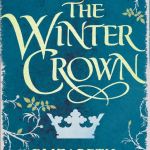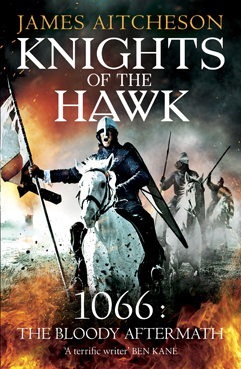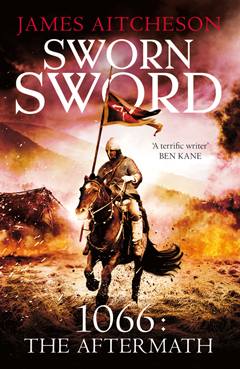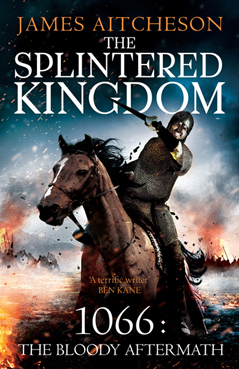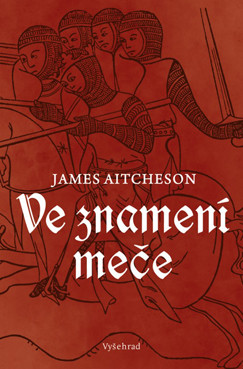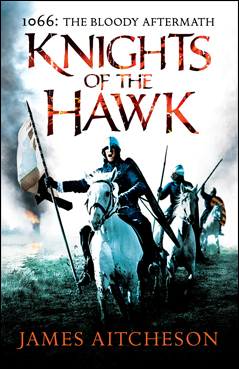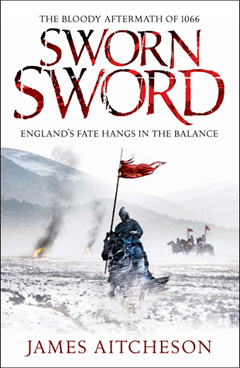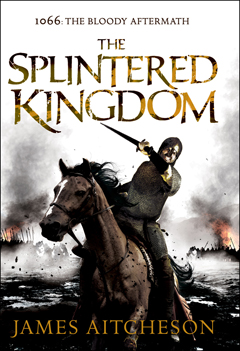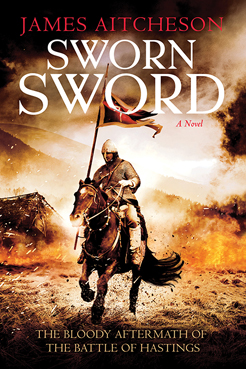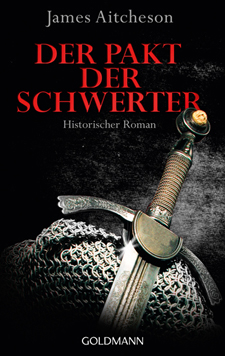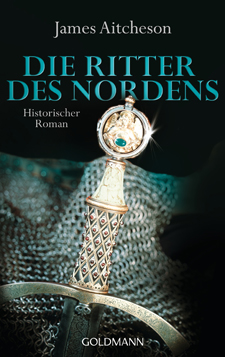This week on the blog I’m pleased to be interviewing award-winning and bestselling historical novelist Elizabeth Chadwick, whose latest novel, The Winter Crown, the second volume in her Eleanor of Aquitaine trilogy, has just been published in the UK.
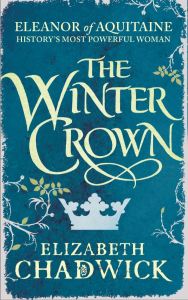
The Winter Crown • Elizabeth Chadwick • Sphere • 496 pp. • £16.99
Eleanor (or Alienor as she was called by contemporaries, and as she is referred to in the novels) was one of the most influential and powerful women in twelfth-century Europe: a woman about whom much has been written over the centuries, and who has been variously portrayed on both stage and screen. Many assumptions have been made about her and yet relatively little is definitively known, as Elizabeth points out in the afterword to the first book in the trilogy, The Summer Queen.
Queen firstly to Louis VII of France and later to Henry II of England, Eleanor became the mother of no fewer than ten children, including King Richard I and King John. Elizabeth’s magnificent series explores the full sweep of her life, beginning with her first marriage at the age of just thirteen and her introduction to the cut and thrust of politics at the royal court. She delves into Eleanor’s character and brings to life a world that in many ways is thoroughly alien to our own, but that in others is so very familiar.
Earlier this year, Elizabeth hosted a Q&A with me on her website to coincide with the publication of The Splintered Kingdom in the United States. I’m delighted today to be able to return the favour, and to welcome her to the blog.
*
Firstly, what is it about the twelfth century that fascinates you?
It goes back to when I was a teenager. I had told myself stories from the moment I had vocabulary. I can remember making up tales around children’s picture books. An illustration would appeal to me and I’d make up a story about it, a bit like the Mary Poppins film where Mary and the children jump into the chalk pavement pictures. I’d make up new adventures inside my favourite illustrations. I did this throughout my childhood and into my teens. Sometimes I would take visuals and inspirations from TV programmes – a photograph of the Star Trek crew from the Radio Times, a still from the BBC production of Vanity Fair or The Last of the Mohicans.
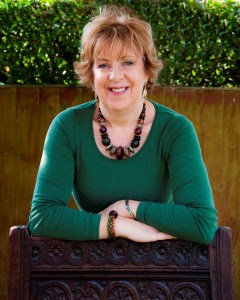 As my teens advanced, the BBC put on a historical series titled the six wives of Henry VIII. I enjoyed this very much and began writing a Tudor story. However, that fell by the wayside after a few chapters. The following year the BBC screened a children’s programme titled Desert Crusader, dubbed from the French series Thibaud ou les Croisades. This was set in the Kingdom of Jerusalem and starred a knight of the mid-12th century, galloping round on his warhorse having exciting, sometimes romantic adventures. The hero to my fifteen year old self was truly gorgeous. I immediately began writing a novel with my protagonist loosely based on this character. Again rather like the chalk pictures, the story grew away from its origins and developed a complete life of its own. I didn’t know anything about the 12th century Holy Land so I had to head off to the library and begin researching. I wanted my story to feel as real as possible. Since my tale involved the hero returning to Europe, specifically to Angevin England, I had to research that aspect too, and that involved not only the political structure but all the detailed cultural background. I can remember being way too excited over finding a copy of Ewart Oakehott’s work on the archaeology of mediaeval weapons in the library and ignoring my A-level Tudor history homework to read up on 12th century swords!
As my teens advanced, the BBC put on a historical series titled the six wives of Henry VIII. I enjoyed this very much and began writing a Tudor story. However, that fell by the wayside after a few chapters. The following year the BBC screened a children’s programme titled Desert Crusader, dubbed from the French series Thibaud ou les Croisades. This was set in the Kingdom of Jerusalem and starred a knight of the mid-12th century, galloping round on his warhorse having exciting, sometimes romantic adventures. The hero to my fifteen year old self was truly gorgeous. I immediately began writing a novel with my protagonist loosely based on this character. Again rather like the chalk pictures, the story grew away from its origins and developed a complete life of its own. I didn’t know anything about the 12th century Holy Land so I had to head off to the library and begin researching. I wanted my story to feel as real as possible. Since my tale involved the hero returning to Europe, specifically to Angevin England, I had to research that aspect too, and that involved not only the political structure but all the detailed cultural background. I can remember being way too excited over finding a copy of Ewart Oakehott’s work on the archaeology of mediaeval weapons in the library and ignoring my A-level Tudor history homework to read up on 12th century swords!
Basically the more I read up on 12th century life and culture, the more I became interested in the period and the more I wanted to write stories set in that timeframe, so one fed off the other.
Do you think it’s an era that is sometimes overlooked?
I think it’s an era that is perhaps less mined than certain others, but it does have its share of novelists – my good friend Sharon Kay Penman for example. There are the Crowner John mysteries of Bernard Knight, or the novels of Ariana Franklin. And of course Pillars of the Earth by Ken Follett. It also has its share of meaty historical incidents – the Anarchy period of the war between Stephen and Matilda, the reign of Henry II and the murder of Thomas Beckett, the Third Crusade. It has towering characters such as the great William Marshal, the loved and loathed Richard the Lionheart, and ditto his brother Prince and then King John. It was a tumultuous period of history, but it’s not quite Tudor territory in terms of saturation, and it does take a dedicated amount of researching. Sometimes people will say it takes less research but that’s not true. It probably takes more to actually understand the period and you have to dig a lot deeper to find what you’re looking for.
You paint a fascinating and complex portrait of your subject, Eleanor of Aquitaine. What attracted you to her and inspired you to choose her as the focus of your latest trilogy?
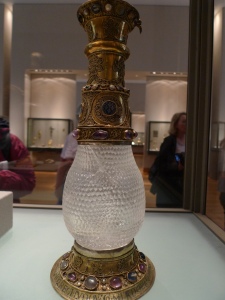
The Eleanor Vase, currently on display in the Louvre. It was given to Eleanor by her grandfather, William IX of Aquitaine, and she later gave it to her first husband, Louis VII of France as a marriage gift. (Photo credit: John Phillips.)
I was also interested in writing about Eleanor because scholarship is constantly turning up new information. For example, we now know she was more likely to have been 13 years old when she married, not 15 as has been earlier thought, and that puts a whole new slant on the way the character is portrayed. This is someone just out of childhood, a pawn in the power games of men, not a knowing, flirtatious older teenager as she has been so often portrayed. I felt there was a lot to be said that hasn’t been said before, and new, realistic ways of interpreting the material through the medium of fiction.
One of the things you do so well in the series is to bring to life the various conflicts, rivalries and alliances within the royal court. When dealing with so many characters, how do you keep track of all their relationships?
This is going to sound strange, I hope it doesn’t sound big headed – or perhaps I need a big head because the knowledge is all there in my mind! I sometimes have to pick up a reference book to check on a detail but on the whole it’s all there up top. I think it helps that I have been reading about and researching the period 1066-1220 since I was 15 and that’s a long time ago. It does mean that a lot of the history is already there and I can start researching from a strong, multi-layered bedrock. I do write a very detailed synopsis at the beginning of the novel and I can refer to this as a timeline so I guess that’s the skeleton part of the structure.
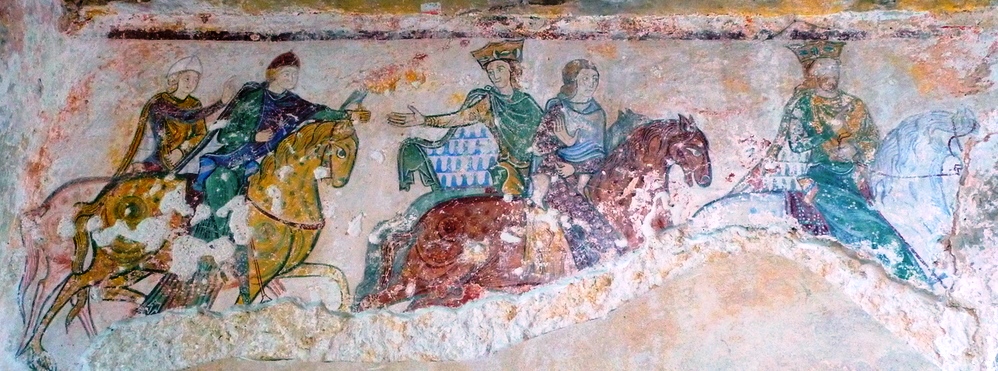
Mural depicting what is thought to be Henry II and his four sons in the chapel of St Radegonde at Chinon, Indre-et-Loire, France. (Photo credit: John Phillips.)
Some of the historical persons featured in your latest series may be familiar to readers of your earlier novels. Do you ever revise your opinion of particular characters, and does that affect how you portray them in your writing?
Yes. I think we are always learning. Personally, what might have been true of my knowledge 10 years ago may now have changed down to new historical discoveries or increased study and awareness on my part. I wrote a novel called The Champion which is one of my earlier slightly more romantic works where I cut Prince John a little more slack than I would now. But at the same time I probably understand more about John and his personality now and can bring that to bear when writing his character today, so he’d be more nuanced. Sometimes there’s a conundrum when a character has to change hair or eye colour because of new research but if that happens there’s always the author’s note to explain it. I wrote a couple of novels about the Bigod family – The Time of Singing and To Defy A King, where one of my characters, Roger Bigod goes through changes as he ages and life takes its toll on him. I’ve had readers say why is he so different from one novel to the next, but I don’t think he is. It’s just that we grow and change and perhaps become less flexible as we get older. So with a character, if one is being realistic, one has to take into account the changes wrought by time and experience. I go with the truest version I know at the point of writing and make up for discrepancies in the afterword should I need to.
Henry II and Eleanor ruled over a territory that famously stretched from the Scottish Borders to the Pyrenees. How did they maintain their authority over such far-flung lands?
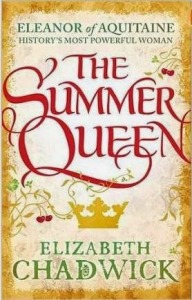
The Summer Queen, the first book in Elizabeth’s Eleanor of Aquitaine trilogy, is available now in paperback, published by Sphere.
Are there any reference books you can recommend for readers interested in finding out more about Eleanor and her world?
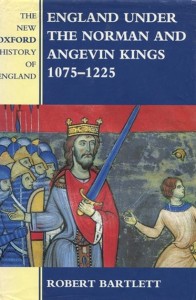
England under the Norman and Angevin Kings • Robert Bartlett
I understand that you are currently writing the final book in the trilogy, The Autumn Throne. What’s next for you?
I’ve discussed the next novels with my publisher, and I can say for definite that William Marshal and his family are once more on the cards. There are gaps in his life that need filling in and I’ve already started research into the background!
*
Many thanks, Elizabeth, for taking the time to talk about your work! The Winter Crown is available now in hardback and as an ebook, published by Sphere. The first book in the trilogy, The Summer Queen, is also available in paperback.

